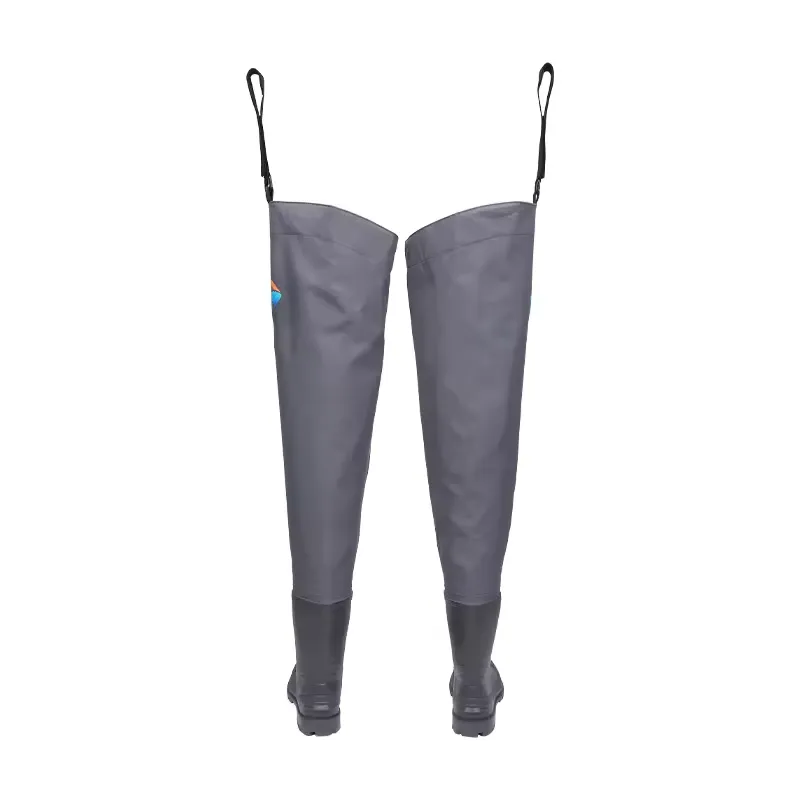The Essential Guide to Choosing Waist Waders for Duck Hunting
Duck hunting is a cherished tradition that brings enthusiasts into the great outdoors, offering a unique blend of excitement and serenity. As any seasoned hunter will tell you, having the right gear is crucial for success, and one of the most important pieces of equipment is a reliable pair of waders. Among the various types available, waist waders are a popular choice for many duck hunters. This article explores the benefits, features, and tips for selecting the ideal waist waders for your duck hunting needs.
Why Choose Waist Waders?
Waist waders are designed to provide partial protection while allowing for greater mobility compared to full hip or chest waders. They are ideal for hunting in shallow waters, where the depth only reaches a hunter’s waist or below. This makes them particularly suitable for marshes, sloughs, and riverbanks, where duck hunting often takes place. The ease of putting them on and taking them off is also a significant advantage, especially when moving between different locations or when access to shorelines is limited.
Key Features to Look For
When selecting waist waders, there are several essential features to consider to ensure you pick the right pair for your hunting adventures
1. Material Waist waders are available in various materials, including neoprene, rubber, and breathable fabrics. Neoprene offers excellent insulation, making it ideal for cold weather conditions. Rubber waders provide durability and are typically less expensive but can be less comfortable over long durations. Breathable fabrics are lightweight and allow moisture to escape, making them great for warmer weather.
2. Fit and Comfort The fit of your waders is critical. They should allow for freedom of movement without being too loose. Opt for adjustable suspenders or belts to customize the fit. Pay attention to the design of the legs as well; reinforced knees can provide additional protection against punctures and tears.
waist waders for duck hunting

3. Waterproofing Ensure that your waist waders are waterproof and have sealed seams to prevent leaks. The last thing you want is to discover a wet spot midway through a hunt.
4. Boot Compatibility Some waist waders come with built-in boots, while others are designed to be worn with separate footwear. If you choose the latter, make sure your boots are compatible with the waders. A good seal at the top of the boots is necessary to prevent water from entering.
5. Weight Consider the weight of the waders, especially if you're planning extended hunts. Lightweight waders can reduce fatigue and make it easier to move through marshy terrain.
6. Pockets and Storage Look for waders with ample storage options. Pockets for calls, ammunition, and other essentials can be a real game-changer in the field.
Tips for Maintenance and Care
To prolong the life of your waist waders, proper care is essential. After each use, rinse them thoroughly with fresh water to remove mud, dirt, and salt. Hang them to dry in a cool, shaded area to avoid degradation from heat or direct sunlight. Regularly check for signs of wear and tear, and make repairs promptly to avoid leaks.
Conclusion
Waist waders are an indispensable tool for duck hunters, offering a perfect balance of mobility, comfort, and protection in shallow waters. By considering key features such as material, fit, waterproofing, and storage options, you can find the right pair that meets your specific needs. With the right waist waders, you’ll be well-equipped to navigate wetlands and marshes, ensuring a successful and enjoyable duck hunting experience. Remember, the right gear not only enhances your performance but also adds to the enjoyment of this time-honored outdoor tradition. Happy hunting!
-
Stay Dry in Any Condition with WadersNewsJul.17,2025
-
Elite Performance with Camouflage Combat BootsNewsJul.17,2025
-
Dry and Comfortable with Green Rubber Garden ShoesNewsJul.17,2025
-
Convenient Protection with Foldable RainbootsNewsJul.17,2025
-
Comfort and Protection with Neoprene Work BootsNewsJul.17,2025
-
Brighten Rainy Days with Floral Rain BootsNewsJul.17,2025
-
Safety Wellies: The Ultimate Combination of Protection, Comfort, and VisibilityNewsJun.19,2025











